How science finds things out
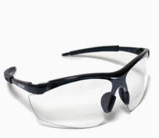 It starts with a question or observation
It starts with a question or observation
Suppose you notice that if you drop mint sweets into diet coke, you get a frothy eruption. After you’ve tried it a few times, you wonder what’s causing it to happen. Where are the bubbles coming from, you ask yourself?

Can you trust it?
Year 7 found this photo on the Internet, but they are a bit suspicious.
We didn’t take this photo, they point out, how do we know if it’s genuine.
How would you decide whether to trust the photo?
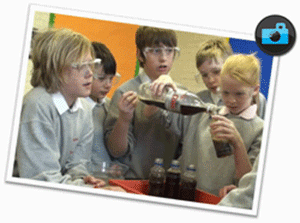
Science is the best method we have to check out what’s true. It’s so reliable because … it relies on gathering observations to support or throw out ideas. The advantage with science is that everyone can see the evidence (provided they have the right equipment).
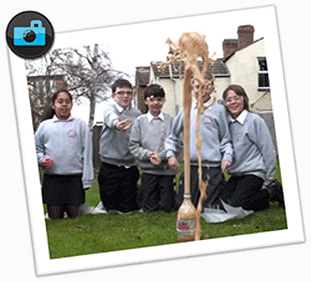
You think, “Aha! The bubbles are coming from the fizzy coke. The sweets are causing the bubbles to froth up and that’s causing the fountain.”
Are you right?
This is the kind of question that is perfect for science. First of all, you need to check whether the drink has to be fizzy. Does the picture on the left help?
Closer inspection of the sweet shows you that the surface is rough.

Perhaps this also makes a difference to how much froth is produced, how can you check?
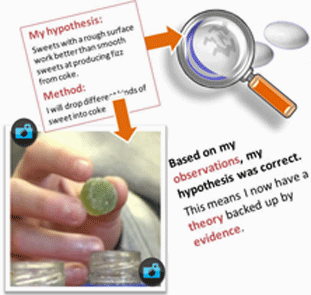
Scientific evidence is objective.
That means everyone can see it (provided they have the right equipment.)
Using science to answer questions and test ideas
If I asked you, “what is the tallest mountain in the world?” you’d probably say Everest… But are you sure? Have you personally measured the heights of all the mountains in the world?
 Luckily for us, these days lots of the ideas we are told have been checked out by scientists…
Luckily for us, these days lots of the ideas we are told have been checked out by scientists…
Science is amazingly useful. We use science to test how long food lasts in and out of the fridge, we use it to discover how good the brakes are on cars and we use it to test the safety of medicines. But that’s just the start of it. Science is involved in just about every aspect of life, these days!

They’ve even measured the height of Everest! First they put a radar transmitter on the top. Then with the help of an overhead satellite, they measured the height as 8850 metres.
So does science have an answer for everything? No! And here’s why. There are some things we can observe and measure. We call these observations or facts or scientific facts and they’re simple to check. An example would be the height of Everest.
There are some more complicated ideas in science that are more like descriptions that help to explain what’s going on. Those are called Theories.
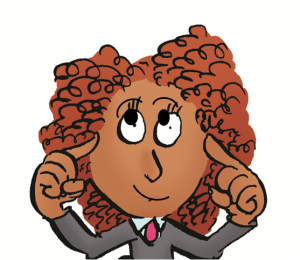 Suppose a student who is younger than you blocks her ears and notices that sounds become quieter. “Why is that?” she asks. How would you explain this – scientifically? Why are sounds quieter when you block your ears?
Suppose a student who is younger than you blocks her ears and notices that sounds become quieter. “Why is that?” she asks. How would you explain this – scientifically? Why are sounds quieter when you block your ears?
Your explanation is a theory about what’s going on. Scientific Theories are theories that can be supported using measurements and/or observations.
Next: We find out about a question science cannot address.